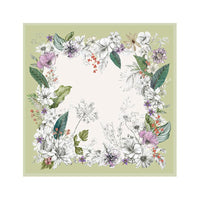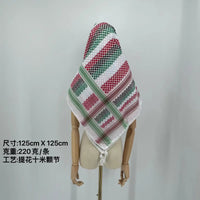In Saudi Arabia, the existence of traditional male headwear is not just a symbol of fashion, but is deeply rooted in the essence of religion and culture. It is not only an integral part of daily life, but also reflects the religious practices and cultural inheritance of the region. The cloth, known as the "Ghutra," is usually white or a red-and-white checkered pattern and, in addition to serving as a sign of identity and faith, also provides protection in the hot, dry desert climate.

Saudi Arabia's economic health and future growth prospects are closely linked, and the country is trying to diversify its economy to reduce its dependence on oil.Diversify the economy and develop sectors such as health, education, infrastructure, recreation and tourism. This shift is reflected in its “Vision 2030 plan”, which aims to boost private sector growth, attract foreign investment, and increase female labor force participation. In addition, Saudi Arabia is also promoting tourism and building high-tech industries in order to become a more diversified and sustainable economy in the future.
First, the history and function of a piece of cloth on the head
The traditional male headscarf in Saudi Arabia, also known as the "Ghutra" or "Kufiya," is a versatile square cloth, often seen in a white or red-and-white checkered pattern, made of cotton or wool. To keep the headscarf in place, Saudis use a black camel-hair ring called the Agal, a simple but practical device that helps keep the headscarf firm during the long hours of everyday life and the vagaries of the desert climate.
In the hot summer months, Saudis drape their headscarf over their shoulders to ventilate their heads. On cold winter days, they wrap their headscarf tightly around their heads to lock in their body heat. When the wind blows, the headband can cover the face, protecting the eyes and respiratory tract from the sand and dust. At night, the head scarf can be turned into a pillow or provide extra warmth as a bedding. In daily life, the headscarf can also be used as a towel to clean, or as a portable package when shopping. In addition, the headscarf can also be used as a tool to capture animals when necessary, and even as a means of self-defense.

Second, the culture and symbol of a cloth on the head
In Saudi Arabia, the headscarf worn by men is not just an everyday item, it also carries deep cultural significance and spiritual symbols. This piece of fabric not only reflects the religious beliefs of the Saudi people, but also expresses their national identity. According to a certain doctrine, believers should remain modest and not display excessive body or adornment, and the headscarf fits neatly into this principle. It covers the hair and forehead, and is an expression of divine awe and obedience, while also avoiding attention and potential temptation.
Saudi leaders, such as the king and members of the royal family, often opt for red, blue, or yellow headscarves, a choice that not only serves as a status symbol but also reflects their high position and privilege. In contrast, ordinary people are more inclined to use white or light-toned headscarves, which represent their humility and respect. For festive occasions, such as weddings and religious festivals, Saudis will choose red and white checkered headscarves, such patterns and colors represent joy and passion. During periods of mourning, dark or black headscarves are used to express their grief and contemplation.

Third, the economy and development of a cloth on the head
In Saudi Arabia, the headscarf is more than just a traditional dress; it has become a symbol of the country's economic power and personal affluence. The country, which is rich in oil reserves, has seen its economy flourish, driven by its liberal economic policies and oil and petrochemical industries. Saudi Arabia's gross domestic product (GDP) reached a staggering figure in 2022, significantly increasing and refreshing the historical record of per capita GDP, which reflects the prosperity of Saudi Arabia.
Against this economic backdrop, the quality of life of the Saudi people has naturally risen. Their attire, including their daily headscarves, began to reflect this affluence and desire for luxury. The hijab was transformed from a simple shade and personal modesty into a fashion accessory that exuded personality, taste and economic status.

As the Saudi economy has soared, the cultural and social meaning of the headscarf has also evolved. No longer a simple piece of fabric, it has become a microcosm of Saudi prosperity and modernity, reflecting the country's place in the global economy and the standard of living of its citizens. Through this traditional element of the headscarf, the Saudis have shown the world how they can respect tradition while also embracing modernity and growing wealth.
The headscarf has multiple profound meanings in Saudi life, it is not only a piece of clothing, but also a bridge connecting Saudi Arabia's past and future, culture and religion, economy and development. The Saudi headscarf conveys the essence of cultural tradition, but also reflects the changes of modern society. It is a symbol of Saudi identity, reflecting the country's unique customs and the identity of its citizens.






